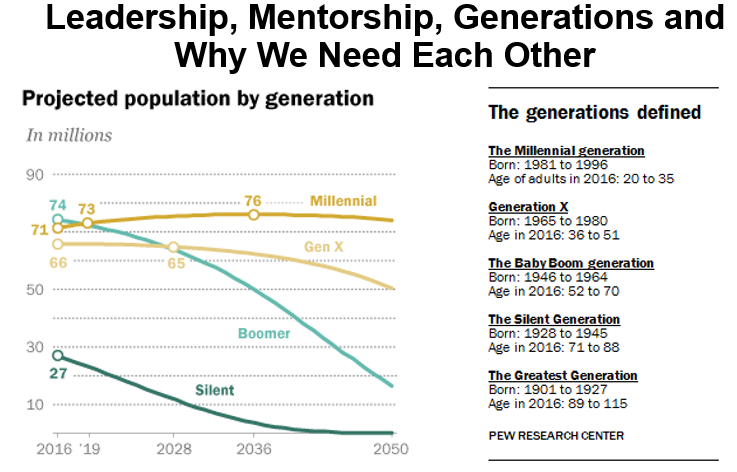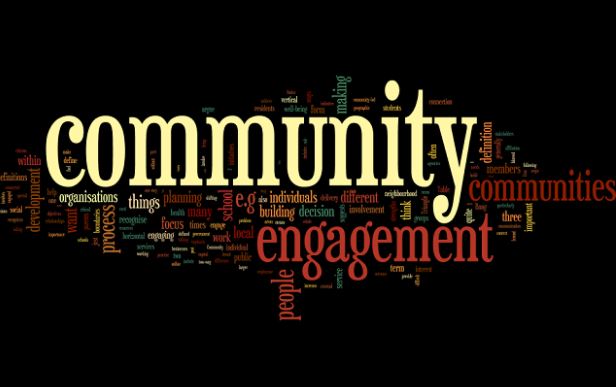We have more opportunities than ever before to create purposeful work and a rewarding life through continual learning relationships – interactions with people, professional networks, and innovative information resources.
The idea of gaining knowledge throughout a lifetime led me to investigate how generations can learn from each other.
This post is the first in a two-part series focused on purposefully creating rewarding, multigenerational learning opportunities in daily life.
Much has been discussed about the differences between Baby Boomers, Millennials and Post-Millennials due to political, economic, social and technology factors.
Understanding how generations approach life differently is fascinating. However, negative stereotypes can create barriers for lifelong learning and human appreciation, distracting us from seeing a bigger life picture.
Generational differences and similarities can be maximized as wonderful assets, rather than deficits.
Pew Research Center describes five U.S. generations during the past century. Pew Research Center acknowledges that generations are a lens through which to understand societal change, rather than a label to oversimplify differences between groups.
The research illustrates differences, as well as striking similarities in mindsets, ambitions and motivational drivers.
As you review Pew’s chart, note that those born between 1928 and 1945 are noted as “The Silent Generation” – a sad description of an entire generation experiencing the Great Depression and World War II.
Pew notes that generational differences are the result of three overlapping processes:
- Lifecycle effects. Young people may be different from older people today, but they may well become more like them tomorrow, once they themselves age.
- Time period effects. Major events (wars, social movements, economic downturns, medical, scientific or technological breakthroughs, etc.).
- Cohort effects. Period events and trends, often leaving a particularly deep impression on young adults because they still are developing their core values. These imprints stay with them as they move through their life cycle.
A very unproductive phrase, “children are to be seen and not heard,” traces back to England during the 1450s and was used routinely until a few decades ago. This phrase hushed younger generations and stunted multigenerational conversations. It assumed the “elders” had all the answers. They would talk among themselves (think home porches) while passing down family stories. There was little two-way conversation with younger people.
Thankfully, times have changed. We know that young voices are absolutely essential. Millennial and Post-Millennial generations are driving innovation. And, the experience of older generations is critical for wisdom and strategy.
A new conversation porch is needed. While there appears to be a gigantic generation gap, we need each other. We have much to learn from each other!
Here are a few questions to create meaningful “two-way conversational porches” with those from other generations.
Ask a younger person:
- What the most important life lesson or skill would he/she recommend for people your age – and why. Then, ask about the best way to learn this skill. (This question is a refreshing, thought-provoking question. The answer may surprise you!)
- Ask a younger person what mentorship or insight they would like to learn. Listen with a non-judgmental attitude and encourage him or her in pursuing this mentorship. (If you have an answer, share quickly – no long lectures!)
Ask an older person:
- What work or life lesson do they WISH they would have learned at your age. You may be surprised by the answer. Then, ask them the best way to learn that lesson.
- If they had a day to live over for any reason, what would that day be and why? Note: The answer may be positive or negative, but the answer will hopefully provide insight.
- What brings the most joy into daily life – or what does a perfect day look like and why. Ask him or her how to create that space, and really listen.
When and how can you create opportunities for multigenerational learning conversations?
- Incorporate fun conversation techniques in your work and community meetings, such as the “World Café” method of conversational leadership.
- At your workplace, create conversation opportunities through meetings that engage input, creative co-working and break room spaces, and an open office environment for conversation sharing.
- Standing in line, or in common spaces where there’s an appropriate opportunity to exchange conversation.
- In airports or on planes if the other person is open to talking.
- At family gatherings with family members you’d like to get to know.
- Anytime you’re willing and available to create a conversational porch.
The next 100 years are being lived now. Someday “they” will be talking about “us.” Today, we can create opportunities to learn from and appreciate people from a variety of generational time periods – while there’s still time.




